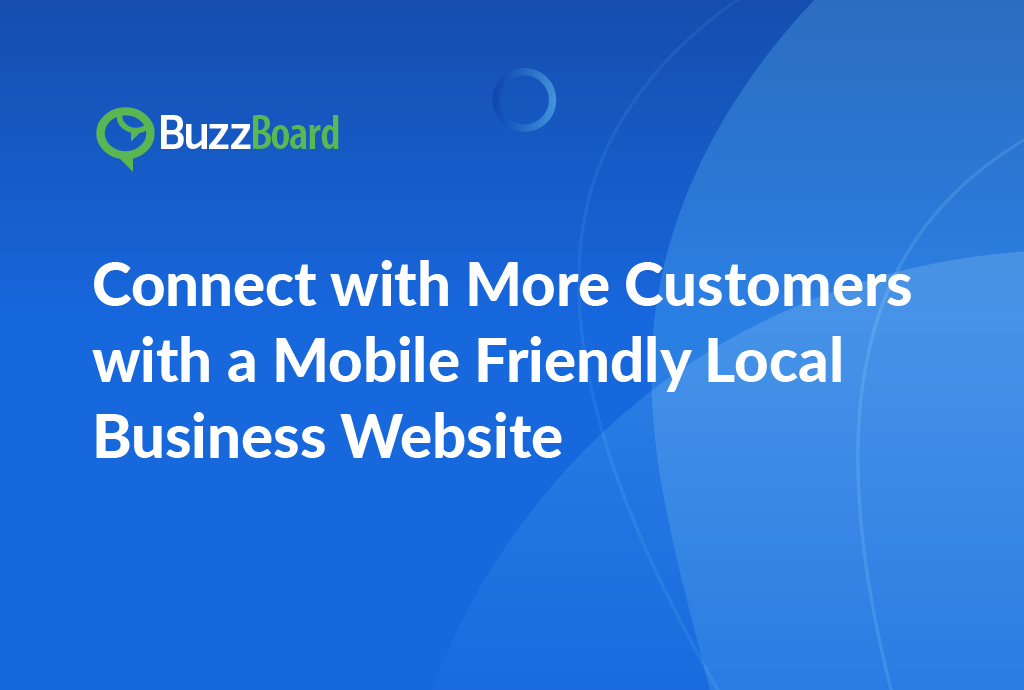Mobile Friendly is Customer Friendly
Boost your local business clients’ online presence by creating a mobile-friendly website that connects with more customers. A responsive website design ensures a seamless user experience, increasing engagement, and driving more conversions. Learn how to create a mobile-friendly local business website and reach a wider audience.
Understanding the Importance of Having a Mobile Friendly Local Business Website
In the digital age, having a mobile-friendly local business website is a prerequisite for effective marketing. The need for this feature arises from the mobile-first indexing implemented by Google, which uses the mobile version of a website as the primary source for ranking and indexing. Considering over 50% of global web traffic originates from mobile devices (Statista), the significance of mobile-friendly design cannot be overstated.
A well-designed website isn’t solely about aesthetic appeal but also revolves around functionality and accessibility, especially on mobile devices. Potential customers are likely to engage with your website on-the-go. A site that fails to display correctly on a smaller screen or takes too long to load on mobile data can deter customers, sending them into the welcoming arms of your competitor.
As a sales professional, it is crucial to emphasize the significance of a mobile-friendly website to small and local businesses. A mobile-friendly website is no longer a luxury, but a necessity in today’s digital landscape. Not only does it have a direct impact on search engine ranking, but it also plays a vital role in shaping the customer experience and conversion rates.
A website that is not optimized for mobile devices can be a major turn-off for potential customers. Imagine a beautifully designed website that is a joy to navigate on a desktop, but becomes a frustrating experience on a mobile device. Tiny links, pinching and zooming, and slow loading times can all contribute to a poor user experience, ultimately driving customers away. In today’s fast-paced digital world, customers expect a seamless and intuitive experience across all devices, including mobile.
By offering a mobile-friendly website design, you can bestow your clients’ businesses with a significant advantage. A mobile-friendly website can improve search engine rankings, increase web traffic, and boost conversion rates. This is because search engines like Google prioritize mobile-friendly websites in their search results, making it more likely for your clients’ businesses to appear at the top of search engine results pages (SERPs).
Moreover, a mobile-friendly website can help your clients’ businesses to stand out from the competition. In a crowded market, a website that is optimized for mobile devices can be a major differentiator, setting your clients’ businesses apart from their competitors. This can lead to increased brand awareness, improved customer engagement, and ultimately, increased sales and revenue.
In addition to the benefits mentioned above, a mobile-friendly website can also improve customer loyalty and retention. When customers have a positive experience on a mobile device, they are more likely to return to the website and make repeat purchases. This can lead to a loyal customer base, which is essential for any business looking to build a sustainable and profitable online presence.
Remember, it is essential to emphasize the importance of a mobile-friendly website to small and local businesses. By offering a mobile-friendly website design, you can help your clients’ businesses to improve their search engine rankings, increase web traffic, boost conversion rates, and stand out from the competition. Make the move now and help your clients’ businesses to flourish in the digital landscape.
Exploring the Relationship Between Website Design and Mobile Friendliness
The connection between website design and mobile compatibility is more crucial than ever, particularly for local businesses seeking to elevate their online presence. With the widespread adoption of smartphones, customers expect fast, seamless, and user-friendly experiences when accessing a mobile-friendly local business website. A website that fails to meet these expectations can lead to a significant loss of potential customers and revenue.
The key components of website design play a vital role in determining a website’s mobile compatibility. Responsive design, for instance, is a critical feature that adapts to any screen size, providing an optimal user experience regardless of whether customers are accessing the website on a smartphone, tablet, or computer. This ensures that the website’s layout, content, and navigation are optimized for each device, resulting in a seamless and enjoyable user experience.
Clean coding is another essential aspect of website design that directly impacts mobile compatibility. By ensuring that the website’s code is free from errors and glitches, local businesses can prevent issues that might arise when customers access their website on a mobile device. This not only enhances the overall user experience but also reduces the likelihood of customers abandoning the site due to technical issues.
Fast load times are also crucial for mobile compatibility. A slow-loading website can be frustrating for customers, leading to a higher likelihood of them abandoning the site and seeking alternative options. In fact, studies have shown that a one-second delay in page load time can result in a 7% reduction in conversions. Therefore, it is essential for local businesses to prioritize fast load times when designing their website.
By making mobile compatibility a priority in their website design strategy, local businesses can reap numerous benefits. A well-structured, mobile-optimized website can not only enhance organic search rankings but also encourage a better user experience. This, in turn, can lead to longer site visits, higher conversion rates, and ultimately, increased revenue.
In addition to these benefits, a mobile-friendly website can also help local businesses to stay ahead of the competition. With the majority of customers using their smartphones to search for local businesses, a website that is not optimized for mobile devices can be a major turn-off. By prioritizing mobile compatibility, local businesses can ensure that their website is accessible and user-friendly for the majority of their customers, giving them a competitive edge in the market.
In conclusion, the connection between website design and mobile compatibility is a critical factor in today’s digital environment. By prioritizing responsive design, clean coding, and fast load times, local businesses can create a website that is not only mobile-friendly but also provides an optimal user experience. This can lead to increased conversions, improved search rankings, and a competitive edge in the market. As the importance of mobile compatibility continues to grow, local businesses must prioritize this aspect of their website design strategy to stay ahead of the curve and achieve their online marketing goals.
How a Mobile Friendly Website Can Enhance Local Business Marketing
Understanding the crucial role of mobile-friendliness in website design is no longer a luxury, but a necessity for local business marketing success. The statistics are staggering: according to recent research, over half of all internet traffic now originates from mobile devices, and this trend is expected to continue growing at an alarming rate (Statista, 2021). As a result, creating a mobile-friendly website for local businesses should be a top priority for marketers, as it not only enhances user experience but also has a direct impact on Google’s website rankings.
A website that is not optimized for mobile can have devastating consequences for a business’s online visibility, ultimately undermining the effectiveness of marketing efforts. In fact, a study by Google found that 61% of users are unlikely to return to a mobile site they had trouble accessing, and 40% will visit a competitor’s site instead (Google, 2020). This highlights the critical importance of user experience in digital marketing, and the need for businesses to prioritize mobile-friendliness in their website design.
Moreover, a mobile-friendly website design is essential for ensuring users stay engaged and eventually convert on your site. With the majority of users accessing websites through their mobile devices, a website that is not optimized for mobile can lead to high bounce rates, low conversion rates, and ultimately, a loss of potential customers. On the other hand, a mobile-friendly website design can improve user experience, increase engagement, and drive conversions. By prioritizing mobile-friendliness, local businesses can improve their online visibility, drive more traffic to their site, and ultimately increase sales and revenue.
For salespeople, understanding the importance of mobile-friendliness in website design is vital for ensuring their clients’ competitiveness in the rapidly evolving digital space. By optimizing their clients’ websites for mobile, salespeople can help them stay ahead of the competition, improve their online visibility, and ultimately drive more sales and revenue. In today’s digital age, a mobile-friendly website design is no longer a nice-to-have, but a must-have for any local business looking to succeed online.
Furthermore, a mobile-friendly website design can also have a significant impact on a business’s brand reputation. A website that is not optimized for mobile can give the impression that a business is outdated, unprofessional, or even untrustworthy. On the other hand, a mobile-friendly website design can convey a sense of modernity, professionalism, and trustworthiness, which can be a major differentiator in a crowded market.
In addition, a mobile-friendly website design can also improve a business’s search engine optimization (SEO) efforts. Google’s algorithm favors mobile-friendly websites, and a website that is not optimized for mobile can negatively impact a business’s search engine rankings. By prioritizing mobile-friendliness, local businesses can improve their SEO efforts, drive more organic traffic to their site, and ultimately increase sales and revenue.
In conclusion, the importance of mobile-friendliness in website design cannot be overstated. By prioritizing mobile-friendliness, local businesses can improve user experience, increase online visibility, drive conversions, and ultimately drive more sales and revenue. Salespeople who understand the importance of mobile-friendliness can help their clients stay competitive in the digital space, and ultimately drive more sales and revenue. In today’s digital age, a mobile-friendly website design is no longer a luxury, but a necessity for any local business looking to succeed online.
Showcasing Successful Examples of Mobile Friendly Local Business Websites
A mobile-friendly website is no longer a luxury, but a vital component in any successful local business marketing campaign. With the majority of consumers increasingly relying on handheld devices for shopping, searching for services, or staying connected, a mobile-friendly local business website is more a necessity than an option. In fact, a study by Google found that 61% of users are unlikely to return to a website that is not mobile-friendly, highlighting the importance of prioritizing mobile-friendliness in local business marketing.
Take Penny Juice, for example, a small business that greatly improved its online presence by investing in a vibrant, user-friendly, and mobile-optimized website design. Its intuitive interface offers seamless navigation on different devices, particularly on mobile platforms, making it easy for customers to find what they’re looking for and make a purchase. The website’s mobile-friendliness has not only enhanced the user experience but also increased conversions and customer engagement.
Shihab’s Bakery is another local business that has successfully embraced mobile-friendliness. Its site’s responsive design ensures that all details are visible, regardless of the device used, whether it’s a smartphone, tablet, or desktop computer. This means that customers can easily access the bakery’s menu, location, and contact information, as well as make online orders and track their delivery status, all from the comfort of their own homes.
The Brown Cow, a local pub, has also revamped its digital presence via a mobile-friendly website. The intuitive design, sleek graphics, and finely curated content contribute to an excellent mobile experience, making it easy for customers to browse the pub’s menu, check out upcoming events, and make reservations. The website’s mobile-friendliness has not only improved the user experience but also increased online engagement and customer loyalty.
Achieving mobile-friendliness isn’t solely about making your website fit smaller screens. It’s about enhancing user experience on handheld devices, which requires a deep understanding of how customers interact with websites on mobile devices. As salespeople aiming at local businesses, it’s crucial to stress the importance of website design in local business marketing. A mobile-friendly website is not only a necessity but also a key differentiator that sets local businesses apart from their competitors.
In addition to improving user experience, a mobile-friendly website can also have a significant impact on local businesses’ online visibility and search engine rankings. Google’s algorithm favors mobile-friendly websites, which means that businesses with mobile-friendly websites are more likely to appear at the top of search engine results pages (SERPs). This can lead to increased website traffic, more conversions, and ultimately, increased revenue.
A mobile-friendly website is no longer a luxury, but a vital component in any successful local business marketing campaign. By prioritizing mobile-friendliness, local businesses can improve user experience, increase online engagement, and drive conversions. As salespeople aiming at local businesses, it’s crucial to stress the importance of website design in local business marketing and help businesses achieve mobile-friendliness to stay ahead of the competition.
The Challenges and Benefits of Making a Local Business Website More Mobile Friendly
Having a mobile-friendly local business website is no longer a luxury, but a necessity for marketing success. The rapid growth of mobile device users has made it imperative for businesses to optimize their websites for mobile compatibility. According to recent statistics, nearly 60% of all website views come from mobile devices, making it crucial to ensure that your website is easily accessible and user-friendly on these devices.
However, transitioning your local business website to a mobile-friendly platform can be a daunting task. One of the primary challenges is redesigning your website layout, especially if it was initially designed for desktop view. This can be a time-consuming and laborious process, requiring significant adjustments to the website’s structure, navigation menus, and images. Moreover, maintaining a responsive design that adapts seamlessly to different screen sizes and devices can be a complex task.
Despite these challenges, the potential benefits of having a mobile-friendly website far outweigh the difficulties. A mobile-friendly website can significantly boost traffic to your website, as it provides a seamless user experience that is optimized for mobile devices. This, in turn, can lead to increased conversions, higher engagement rates, and improved business performance.
Furthermore, Google prioritizes mobile-friendly sites in search results, which means that a mobile-friendly website can also improve your local business’s online visibility. This is particularly important for local businesses, as online search is often the primary way that customers discover new businesses. By having a mobile-friendly website, you can ensure that your business is visible to potential customers and that they can easily find and access your website on their mobile devices.
A mobile-friendly website also enhances the user experience, which is critical in today’s digital landscape. Modern consumers expect a seamless and intuitive experience when interacting with a website, and a mobile-friendly website can provide this. With a mobile-friendly website, users can easily navigate your website, access the information they need, and complete tasks quickly and efficiently. This can lead to increased user satisfaction, higher conversion rates, and improved business performance.
In addition to these benefits, a mobile-friendly website can also help to improve your local business’s reputation and credibility. A website that is optimized for mobile devices can convey a sense of professionalism and modernity, which can help to build trust with potential customers. Moreover, a mobile-friendly website can also help to improve your business’s social media presence, as it can be easily shared and accessed on social media platforms.
In conclusion, creating a mobile-friendly, local business website is a necessary marketing strategy in today’s increasingly digital society. While it may present challenges, the potential benefits for your local business are significant. By having a mobile-friendly website, you can improve your online visibility, enhance the user experience, and boost your business’s performance. Therefore, it is essential to prioritize the development of a mobile-friendly website and to ensure that it is optimized for mobile devices.









